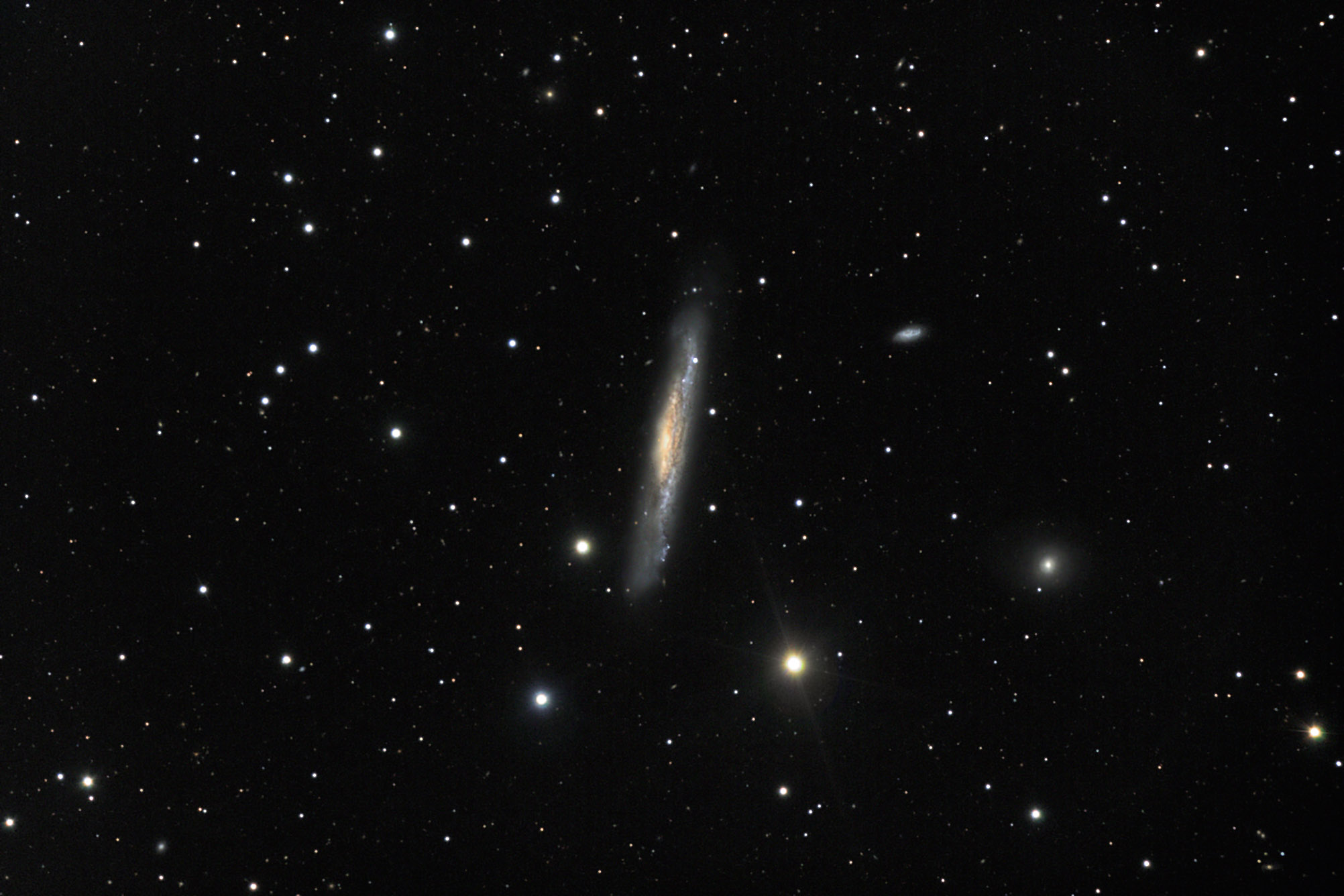| Description | Images |
Object name: NGC3079Designation(s): NGC3079, NGC 3079 and NGC 3073 are a pair of galaxies that have interacted in passing. NGC 3079 is the big one in the center. To the right of it and down a bit is NGC 3073. The small blue spiral is CGCG 265-055. The two NGC galaxies are at a distance of 59 and 57 million light years (7073 and 7079 respectively. CGCG 265-055 is 64 million light years and while apparently related isn't considered to be interacting from the notes I can find. Odd as its very blue color would indicate massive star formation which can be a sign of interaction. Yet 7073 shows little star formation going on. NGC 7079, however, shows major signs of interaction. Its disk is severely warped. It appears like the core is bouncing up and down (or right to left at my view angle) and has been caught far to the left. I find papers citing NGC 3073 having a young stellar population indicating rapid star formation is going on. Yet I see no sign of it in the photo while CGCG 265-055 shows the obvious signs of such star birth. Yet that isn't mentioned in the papers I saw. I'm confused. Related Designation(s):1RXS J100158.9+554053, 2MASX J10015792+5540480, 2MFGC 07766, 2PBC J1002.0+5539, 2XMM J100157.8+554047, 2XMMp J100157.8+554047, 4C +55.19, 6C B095835.0+555517, 7C 0958+5555, 87GB 095836.0+555511, 87GB[BWE91] 0958+5555, 8C 0958+559, AKARI J1001575+554049, BMW-HRI J100158.3+554100, BMW-HRI J100158.4+554103, BMW-HRI J100158.7+554051, CGCG 0958.5+5555, CGCG 266-008, CXO J100157.8+554044, HOLM 156A, IRAS 09585+5555, IRAS F09585+5555, LDCE 0700 NED002, LGG 188:[G93] 001, LQAC 150+055 017, MCG +09-17-010, NGC 3079, NGC 3079:[PTV98] H15, NGC 3079:[PTV98] P16, NGC 3079:[RW2000] X-01, NGC3079, NSA 136420, NVSS J100157+554048, PGC 029050, RGB J1001+556, RX J100158.5+554049, RX J1002.0+5541, SDSS J100157.80+554047.2, SDSS J100157.94+554047.8, SWIFT J1001.7+5543, SWIFT J1001.8+5542, TXS 0958+559, UGC 05387, UZC J100157.3+554054, VIPS 0291, VIPS J10019+5540, VLSS J1001.9+5540, [JBB2007] J100157.79+554047.2 , [M98j] 079 NED02, [MHH96] J100200+554035, [PVK2003] J150.49250+55.67861 , [TCW2007] 072, [VCV2001] J100158.5+554050, [VCV2006] J100158.5+554050, [WB92] 0958+5555, |
